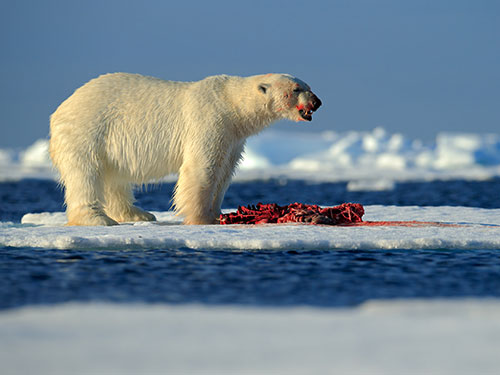The World Economic Forum (WEF) recently published its 13th edition of The Global Risks Report. The annual publication defines, prioritises and describes global risks affecting societies and business. It also shows the interconnections between various categories of risks and major global trends. As in previous years, The Global Risks Report 2018 is based on the annual Global Risks Perception Survey (GRPS), completed by 900 members of the World Economic Forum’s global multi-stakeholder community. Respondents are drawn from business, academia, civil society and the public.
The survey asked respondents to consider 30 global risks categorised as societal, technological, economic, environmental or geopolitical, over a 10-year time horizon. 13 global trends are also considered by the survey. To draw the Global Risks Interconnections Map 2018, survey respondents were asked the following question: “Global risks are not isolated and it is important to assess their interconnections. In your view, which are the most strongly connected global risks? Please select three to six pairs of global risks.” At The Natural Step, we use these insights intensively. This year’s report again underlines the challenge and the indispensability of a systems perspective and approach.
Global risks 2018 – executive summary
Good news first: A global economic recovery seems to be under way
Humanity has become remarkably adept at understanding how to mitigate conventional risks that can be isolated and managed with standard risk-management approaches. But we are much less competent when it comes to dealing with complex risks in the interconnected systems that underpin our world, such as organisations, economies, societies and the environment. There are signs of strain in many of these systems: our accelerating pace of change is testing the absorptive capacities of institutions, communities and individuals. When risk cascades through a complex system, the danger is not of incremental damage but of “runaway collapse” or an abrupt transition to a new, suboptimal status quo.
Environmental risks have grown in prominence in recent years
This is a trend that has continued this year, with all five risks in the environmental category being ranked higher than average for both likelihood and impact over a 10-year horizon. This follows a year characterised by high-impact hurricanes, extreme temperatures and the first rise in CO2 emissions for four years. We have been pushing our planet to the brink and the damage is becoming increasingly clear. Biodiversity is being lost at mass-extinction rates, agricultural systems are under strain and pollution of the air and sea has become an increasingly pressing threat to human health.
Cybersecurity risks are growing both in prevalence and disruptive potential
Attacks against businesses have almost doubled in five years. And incidents that would once have been considered extraordinary are becoming more and more commonplace. The financial impact of cybersecurity breaches is rising, and some of the largest costs in 2017 related to ransomware attacks. Another growing trend is the use of cyberattacks to target critical infrastructure and strategic industrial sectors, raising fears that, in a worst-case scenario, attackers could trigger a breakdown in the systems that keep societies functioning.
Headline economic indicators suggest the world is getting back on track
But still the global economy faces a mix of long-standing vulnerabilities and newer threats that have emerged in the years since the crisis. The familiar risks include potentially unsustainable asset prices, with the world now eight years into a bull run; elevated indebtedness, particularly in China; and continuing strains in the global financial system. Among the newer challenges are limited policy firepower in the event of a new crisis, and disruptions caused by intensifying patterns of automation and digitalisation.
A new and unsettling geopolitical phase
Multilateral rules-based approaches have been fraying. Re-establishing the state as the primary locus of power and legitimacy has become an increasingly attractive strategy for many countries, but one that leaves many smaller states squeezed as the geopolitical sands shift. This creates new risks and uncertainties, such as rising military tensions, economic and commercial disruptions, and destabilizing feedback loops between changing global conditions and countries’ domestic political conditions. International relations now play out in increasingly diverse ways. Assessing and mitigating risks across all these theatres of potential conflict will require careful horizon scanning and crisis anticipation by both state and non-state actors.



Future Shocks, Hindsight and Risk Reassessment
This year’s report introduces three new series: future shocks, hindsight and risk reassessment. Our aim is to broaden the report’s analytical reach: each of these elements provides a new lens through which to view the increasingly complex world of global risks.
Future shocks is a warning against complacency and a reminder that risks can crystallize with disorientating speed. In a world of complex and interconnected systems, feedback loops, threshold effects and cascading disruptions can lead to sudden and dramatic breakdowns. The Global Risks Report 2018 presents 10 such potential breakdowns, not as predictions, but as food for thought.
In hindsight the report looks back at risks having been analysed in previous editions, tracing the evolution of the risks themselves and the global responses to them. Revisiting our past reports in this way allows to gauge risk-mitigation efforts and highlight lingering risks that might warrant increased attention. This year the report focuses on antimicrobial resistance, youth unemployment, and “digital wildfires”, which bear a close resemblance to what is now known as “fake news”.
In risk reassessment, selected risk experts share their insights about the implications for decision-makers in businesses, governments and civil society of developments in our understanding of risk. Roland Kupers writes about fostering resilience in complex systems, while Michele Wucker calls for organisations to pay more attention to cognitive bias in their risk management processes.
For more information please download our executive summary of “The Global Risks Report 2018” or have a look at the full report.
Classification of global risks 2016
In 2016, the WEF identified a total of 29 global risks. The content and nature of the set of risks change over time. The global risks are grouped into five different categories: environmental, societal, economic, geopolitical and technological.
Environmental risks
- Extreme weather events, e.g. floods, storms, etc.
- Failure of climate-change mitigation and adaptation
- Major biodiversity loss and ecosystem collapse, in regard to land or ocean
- Major natural catastrophes, e.g. earthquakes, tsunamis, volcanic eruptions or geomagnetic storms
- Man-made environmental catastrophes, e.g. oil spills, radioactive contamination etc.
Societal risks
- Failure of urban planning
- Food crisis
- Large-scale involuntary migration
- Profound social instability
- Rapid and massive spread of infectious diseases
- Water crises
Economic risks
- Asset bubble in a major economy
- Deflation in a major economy
- Failure of a major financial mechanism or institution
- Failure/shortfall of critical infrastructure
- Fiscal crises in key economies
- High structural unemployment or underemployment
- Illicit trade, e.g. illicit financial flow, tax evasion, human trafficking, organised crime, etc.
- Severe energy price shocks, upward or downward
- Unmanageable inflation
Geopolitical risks
- Failure of national governance, e.g. failure of rule of law, corruption, political deadlock, etc.
- Interstate conflict with regional consequences
- Large-scale terrorist attacks
- State collapse or crisis, e.g. civil conflict, military coup, failed states, etc.
- Weapons of mass destruction
Technological risks
- Adverse consequences of technological advances
- Breakdown of critical information infrastructure and networks
- Large-scale cyber-attacks
- Massive incidence of data fraud/theft
Global risks in 2016 from a regional perspective
In 2016, large-scale involuntary migration has been perceived as the most likely global risk for Germany, followed by unemployment or underemployment and the risk of a fiscal crisis.
Source: The Global Risks Reports 2016, World Economic Forum
Global risks from climate change to large-scale involuntary migration are becoming increasingly imminent, sometimes in new and unexpected ways. If we want to preserve and save the planet, we need to move beyond risk mitigation to build resilience.
Global risks outlook 2016
The Top Five Global Risks of Highest Concern
For the next 10 years
- Water crises 39.8%
- Failure of climate-change mitigation and adaption 36.7%
- Extreme weather events 26.5%
- Food crises 25.2%
- Profound social instability 23.3%